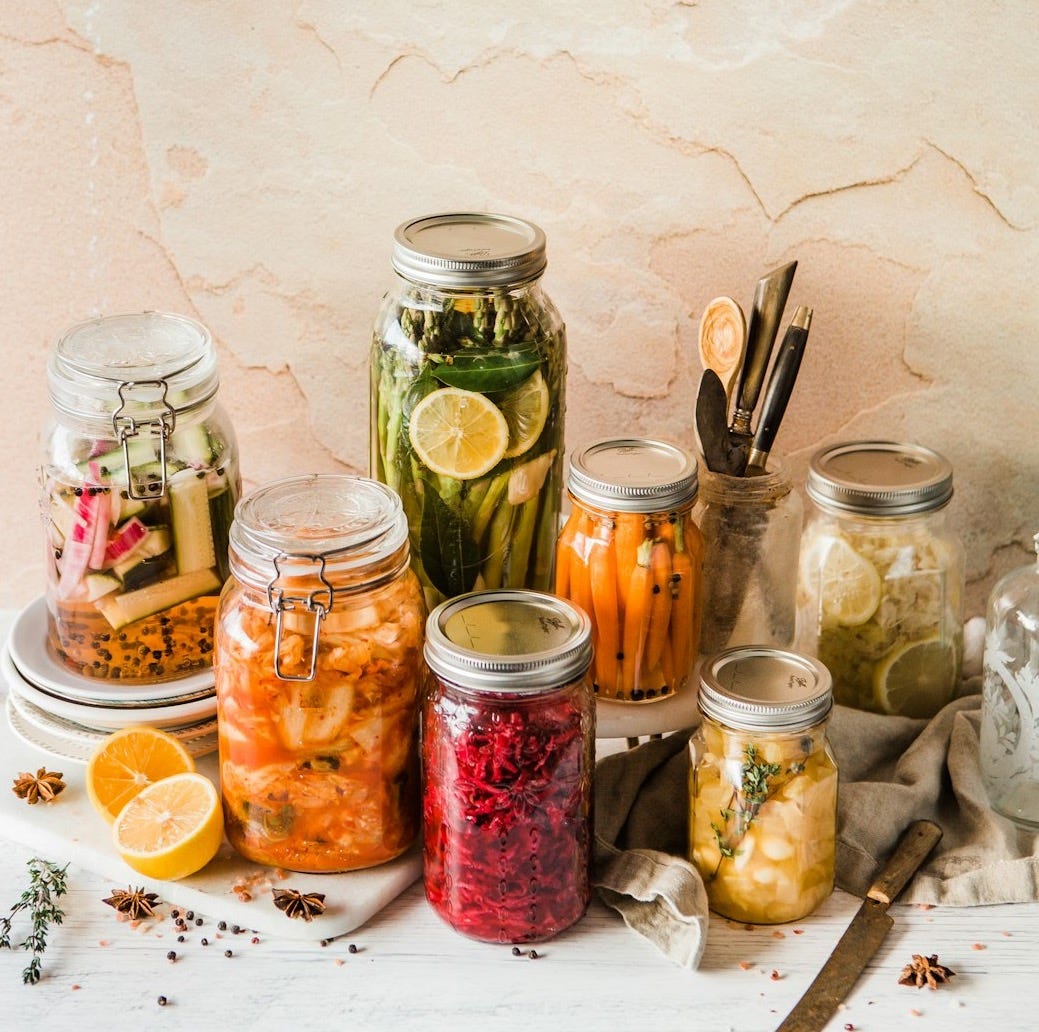Cemented Fermented
Listen to your gut...literally.
So often when you hear the word “healthy”, you immediately have a mental image. Perhaps a person with rock solid abs and big biceps, or maybe a runner breaking through the finish line of a long distance race. Both are admirable examples, and represent mentally and physically the benefit of good exercise.
What often goes overlooked in terms of health is how your body is performing internally, specifically in terms of digestion and nutrient deficiency. For a long time, I was looking at food with the priority of muscle growth and personal satisfaction, but failed to understand the benefit of foods that help my body digest and protect. Good nutrients are the ones that provide long term benefits with short term residency, meaning they shouldn’t be hanging around in your body for long periods of time, but rather you should be consistently moving them in and out of your body. Foods that overstay their welcome are often the ones that cause inflammation, which is harmful when it becomes chronic.
Probiotics, which are live microorganisms with a variety of preventative health benefits, are a core part of maintaining positive gut health. Potential benefits include prevention of constipation, common cold, and certain skin conditions.
If you’re not familiar with how the body works, then the idea of bodily microorganisms can sound repulsive, but some of these are natural and essential to your health. Of course, there are harmful microorganisms, such as large amounts of viruses or parasites, but these are countered by the good microbes formulated by probiotics with beneficial bacteria. Think of these beneficial microorganisms like having a big guard dog, they’re ideal for protection.
After a couple years now of prioritizing probiotics in my diet, I’ve noticed a big difference in how my body feels internally, especially in significant improvement with digestion. My two favorite probiotic foods are Kimchi and Sauerkraut. Here are some historical and nutritional facts on each:
Kimchi
Largely popular in Korean culinary dishes, Kimchi was developed thousands of years ago as part of an effort to store vegetables during the winter when many people were dying of starvation.
Outside of probiotic benefits, it contains vitamins A (vision), B (brain), C (immunity), and has antioxidants which support the body as it ages, helping improve brain, eye, and skin health.
Sauerkraut
“Sour cabbage” originated in China thousands of years ago as well. The fermentation technique of creating it was brought to Eastern Europe, where the use of salt was made prevalent instead of rice wine for the fermentation process.
Germans eventually took a strong liking to the dish and made it a core part of their cuisines, giving it the name “Sauerkraut”.
It’s rich in Vitamin C, providing significant aid to the immune system. It also has other benefits such as fiber (digestion), calcium (bone density), and potassium (blood pressure).
Conclusion
You’ll find these two cabbages available in most grocery stores, but to get the most of their benefits, make sure to select ones that are raw or unpasteurized. Any additional pasteurization process can kill the beneficial bacteria you’ll want to consume.
They both are great on their own or paired lightly with most dishes. As tempting as it may be to make your own version of “kimchi fried rice”, try to refrain cooking the cabbage and just add it on its own straight out of the refrigerator.
Consistency is key if you’re looking to maintain good gut health. I try to eat one to two servings of these fermented cabbages each day. Like exercise, or anything with significant health benefits, incorporating them daily is how you maintain the benefits, and continue to feel empowered in your body.




